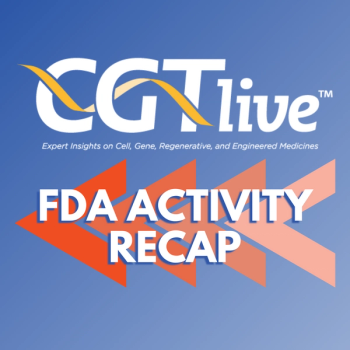
Gene Therapy Improves Grade 2/3 Xerostomia Symptoms
Participants treated both unilaterally or bilaterally reported clinically meaningful improvements on GRCQ and XQ scale scores.
“Today we are releasing data from the completed Phase 1 AQUAx study which now includes the final 12-month data from all bilaterally treated participants. The data demonstrate clinically important improvements in two different patient reported outcome questionnaires for xerostomia, as well as meaningful increases in absolute saliva production in both bilaterally and unilaterally treated cohorts at 12 months,” Alexandria Forbes, PhD, president and chief executive officer, MeiraGTx, said in a statement. “We are also presenting additional data from our long-term follow-up study demonstrating durability of improvement in participants who have reached the 2- and 3-year post-treatment assessment, as well as supportive data showing transduction of parotid glands treated with AAV2-hAQP1 up to 24 months post-treatment and AQP1 protein expression.”
AQUAx is a multicenter, open-label, dose-escalation study evaluating a single-dose of AAV2-hAQP1 to one or both parotid glands in participants with radiation-induced salivary hypofunction and grade 2/3 xerostomia. The study consists of 4 dose-escalation cohorts of 3 participants each for both unilateral and bilateral treatment and was conducted in 3 centers in the United States and 1 in Canada. The primary outcome was safety and the secondary outcomes included change in patient-reported measures of xerostomia symptoms and whole saliva flow rate.
The updated data are from all 24 participants having reached 12 months of follow-up. Both unilateral (n = 8; 66%) and bilateral (n = 10; 83%) cohorts reported improvements on the Global Rate of Change Questionnaire (GRCQ) compared with baseline. The responders reported changes of at least 2 in symptoms they considered “important” or “very important” and 5 in the bilateral cohort and 4 in the unilateral cohort gave the highest improvement scores (6 or 7) in xerostomia symptoms. Two-point improvements are considered important while 3-point or more improvements are considered a substantial improvement. No symptoms worsened. Unilateral cohorts had an overall improvement of over 3 points at12 months. Bilateral cohorts had an overall improvement of over 3 points by 2 months and 4 points by 6 months, which was maintained at 12 months.
READ MORE:
The participants also reported improvements on Xerostomia Questionnaire (XQ) scores, on which a decrease of 8 points or more is considered clinically meaningful, and 10 points considered a substantial improvement. Both unilateral (n = 7; 58%) and bilateral (n = 9; 75%) cohorts had improvements by at least 8 points at 12 months for an overall response rate of 66% (n = 16). Half of the unilateral cohort and 75% of the bilateral cohort had a 10-point improvement at 12 months. The unilateral cohort had an average 13-point improvement from baseline at 12 months and the bilateral cohort had an average 21-point improvement. Both groups had XQ scores improve by over 8 points soon after treatment, and over 10 points within 2 months after treatment.
The study also assessed whole saliva flow, which improved to within the normal range of production in the bilateral cohort and above the range of hyposalivation in the unilateral cohort. Six of 7 biopsies obtained also showed that AAV2-hAQP1 genomes persisted past 12 months.
“We are excited to present these data showing meaningful activity across key endpoints in participants with intractable grade 2 and 3 xerostomia which has been persistent for many years prior to treatment with AAV2-hAQP1. We have initiated a randomized, double-blind, placebo-controlled, Phase 2 study which is currently enrolling and treating participants, and we look forward to advancing the development of a potential treatment for this severely debilitating condition,” Forbes added.
The phase 2 study will enroll 120 participants to evaluate 0.4E12 and 1.2E12 doses of AAV2-hAQP1 compared with placebo. It will primarily assess the change from baseline to 12 months in symptom-specific XQ as well as change in whole saliva flow rate, safety and tolerability, and GRCQ. Unilateral administration of AAV2-hAQP1 is also currently being assessed in a phase 1 National Institutes of Health trial in participants with irradiation-induced parotid salivary hypofunction.
REFERENCE
MeiraGTx Announces Positive Clinical Data from the AQUAx Phase 1 Clinical Study of AAV2-hAQP1 for the Treatment of Grade 2/3 Radiation-Induced Xerostomia. News release. MeiraGTx. June 27, 2023. https://firstwordpharma.com/story/5755468
Newsletter
Stay at the forefront of cutting-edge science with CGT—your direct line to expert insights, breakthrough data, and real-time coverage of the latest advancements in cell and gene therapy.































